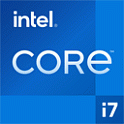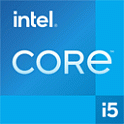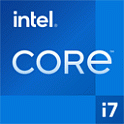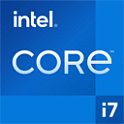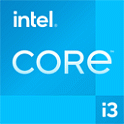 Intel Core i7-875K
Intel Core i7-875K
 AMD A10-6700
AMD A10-6700
Comparision Intel Core i7-875K vs AMD A10-6700
Grade
Top specs and features
Passmark test
Power Consumption (TDP)
Technological process
Number of transistors
L1 cache size
Description
The Intel Core i7-875K processor runs at 2.93 Hz, the other AMD A10-6700 runs at 3.7 Hz. Intel Core i7-875K is able to accelerate to 3.6 Hz , and the second to 4.3 Hz. The maximum power consumption for the first processor is 95 W, and for AMD A10-6700 65 W.
In terms of architecture, Intel Core i7-875K is built using 45 nm technology. AMD A10-6700 on the 32 nm architecture.
Relative to processor memory. Intel Core i7-875K can support DDR3. The maximum supported size is 16 MB. It should be noted that the maximum memory bandwidth is 21. The second processor AMD A10-6700 is capable of supporting DDR3. The throughput is There is no data. And the maximum amount of supported RAM is There is no data MB.
Graphics. Intel Core i7-875K has a graphics engine There is no data. The frequency of which is - There is no data MHz. AMD A10-6700 received video core AMD Radeon HD 8670D. Here the frequency is 844 MHz.
How processors perform in benchmarks. In the PassMark benchmark, Intel Core i7-875K scored 3364. And AMD A10-6700 scored 3076 points.
Why Intel Core i7-875K is better than AMD A10-6700
- Passmark test 3364 против 3076 , more on 9%
- L1 cache size 256 KB против 192 KB, more on 33%
- Number of threads 8 против 4 , more on 100%
Intel Core i7-875K vs AMD A10-6700: highlights


Test results
Technology
Performance
Memory specification
Interfaces and communications
Main characteristics
FAQ
Can Intel Core i7-875K and AMD A10-6700 work in 4K mode?
Intel Core i7-875K - There is no data. AMD A10-6700 - There is no data.
How many PCIe lanes
Intel Core i7-875K - 16. AMD A10-6700 - There is no data.
How much RAM does it support?
Intel Core i7-875K supports 16 GB. AMD A10-6700 supports There is no dataGB.
How fast are the processors?
Intel Core i7-875K operates on 2.93 GHz.7 GHz.
How many cores does the processor have?
Intel Core i7-875K has 4 cores. AMD A10-6700 has 4 cores.
Do processors support ECC memory?
Intel Core i7-875K - doesn't have. AMD A10-6700 - There is no data.
Does Intel Core i7-875K have embedded graphics?
Intel Core i7-875K - There is no data. AMD A10-6700 - AMD Radeon HD 8670D
What kind of RAM is supported
Intel Core i7-875K supports DDR3. AMD A10-6700 supports DDR3.
What is the socket of the processors?
Using LGA1156 to set Intel Core i7-875K. FM2 is used to set AMD A10-6700.
What architecture do they use?
Intel Core i7-875K is built on the Lynnfield architecture. AMD A10-6700 is built on the Richland architecture.
Is the Intel Core i7-875K CPU multiplier unlocked?
Intel Core i7-875K - has. AMD A10-6700 - doesn't have.
How do processors perform in benchmarks?
According to PassMark, Intel Core i7-875K scored 3364 points. AMD A10-6700 scored 3076 points.
What is the maximum frequency of processors?
Intel Core i7-875K has a maximum frequency of 3.6 Hz. The maximum frequency of AMD A10-6700 reaches 4.3 Hz.
How much energy do they consume?
The power consumption of Intel Core i7-875K can be up to 95 Watts. AMD A10-6700 has up to 95 Watts.














